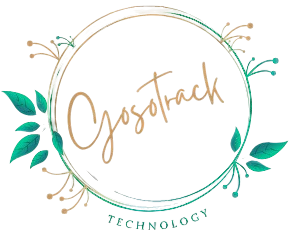
In the world of IT, cloud computing incorporates two meanings, where the most often considers as a remote workload, also known as a “public cloud”, downloaded from the benefactor’s data center on the internet. Popular public cloud services cater to the services of AWS certification, Sales-force CRM, and Microsoft Azure, all are exhibiting this well-known term for cloud computing. Nowadays, almost all enterprises use multiple access, which simply means they use a variety of public cloud services. Whereas, the second meaning of cloud computing describes its operation: a virtual set of resources that ranges from raw computing power to the functionality of on-demand applications. When users purchase cloud services, the provider responds to these requests with advanced automation rather than manual delivery. Numerous business has already stepped-in to avail the perks of cloud computing and likewise provide cloud computing certification training to maintain their position in the scientific world.
What is Cloud Computing?
Nowadays, with reference to IT, cloud computing in a simple language known as a system of offering a set of mutual computing resources, including applications, procedures, storage, networking, platform development, and deployment, in addition to business procedures. Maintains a variety of workloads, including team roles such as key tasks and interactive mutual applications, as well as monitor the use of resources in real time to enable reallocation of resources as needed.
Types of Cloud Computing

However, all clouds are not the same at all like there is no one type of cloud for everyone. Various models, frame and services have been developed to provide the user with a customized solution. At the initial stage, the user needs to determine the type of cloud distribution or cloud architecture into which the cloud services will be deployed, though there are three assorted ways to use cloud services: public, private, or cloud.
Public Cloud
The public cloud is owned and operated by third parties providing cloud services over the internet that utilize their computing origins, such as servers and storage. Microsoft Azure and AWS reflect as an illustration of a public cloud; therefore AWS certification considers as a plus point while becoming a part of any software house. In addition to the public cloud, the cloud company has all the hardware, software and other support, one has to access this service and can manage the account through a browser.
Private Cloud
Private cloud refers to the computing resources used by only one company or organization respectively, however, private clouds can physically reside in the business data center. Several organizations also pay for the maintenance of their private cloud to third party providers. A private cloud is likewise known as a cloud that hosts services and infrastructure on private networks.
Hybrid Cloud
The combination of public and private clouds refers to a hybrid cloud, which bound the technology together that enables data and applications to be shared. Though by allowing data and applications to switch between private and public clouds, a hybrid cloud gives an enterprise more adaptability, greater distribution, and the impact, security, and continuity of existing infrastructure.
The Three Main Cloud Services
No matter what cloud model an individual use, there are three main ways to deploy the cloud: Infrastructure as a Service (I.a.a.S), Platform as a Service (P.a.a.S), and Software as a Service (S.a.a.S).
Infrastructure-as-a-Service
Cloud computing can be divided into three cloud computing models, where Infrastructure-as-a-Service (I.a.a.S) refers to the basic IT elements that can be rented: Corporal or virtual servers, storage and networks. This is, however, supposed to be interesting for organizations that want to build applications from scratch and want to manage almost all components themselves, but it requires that companies have the technical skills to organize this level of service.
Platform-as-a-Service
The next element is Platform as a Service (P.a.a.S), in addition to basic storage, networking, and virtual servers, it also contains the tools and developers needed to build applications, consisting of middle-ware cloud, database management, operating systems and tools for development. With P.a.a.S, one can distribute existing applications indoors and broadcast to the cloud, and this makes the applications more flexible.
Software-as-a-Service
Software as a service (S.a.a.S) is the provision of applications as a service, probably the version of the cloud used most commonly on a daily basis. The underlying equipment and operating system are not related to the end-user accessing the service through a browser or application; though it is frequently bought by the headquarters or the consumer. However, SaaS has become common due to two factors. First, the flexibility of the cloud architecture made it possible to transfer applications in the absence of hand-operated involvement, and secondly, the browser has become a universal user interface.
Benefits of Cloud Computing
The main interest of the cloud is to reduce the time it takes to launch actively developed applications to the market. Developers are increasingly drawn to the cloud with new advanced services that can be integrated into applications ranging from engineering to the Internet of Things (IoT). While businesses sometimes migrate to the cloud to reduce resource center needs, new applications that leverage cloud services and the natural function of the cloud are a real asset. They integrate with micro-services architecture, Linux containers to improve application capabilities, and management solution of the container, like Kubernetes, which provides the container services. Cloud-based methods and solutions can be part of public or private clouds and provide extremely prompt DevOps-inspired workflows.
Future of Cloud Computing
Despite its long history, cloud computing is still at a relatively early stage, several other organizations are still considering which applications are supposed to switch and when they should upgrade. Their use is likely to increase only if it is more convenient for organizations to keep their information outside the basement server accordingly. However, cloud computing training is still in its infancy, by some estimates, only 12 percent of the mobile workload is actually delivered. It is the simplest one that can hardly be challenged with economic data.
So, if you want to excel in cloud computing or have a business working on cloud or have employees to train around cloud technology then get enrolled in QuickStart’s AWS certification training program to stay ahead in competition.
